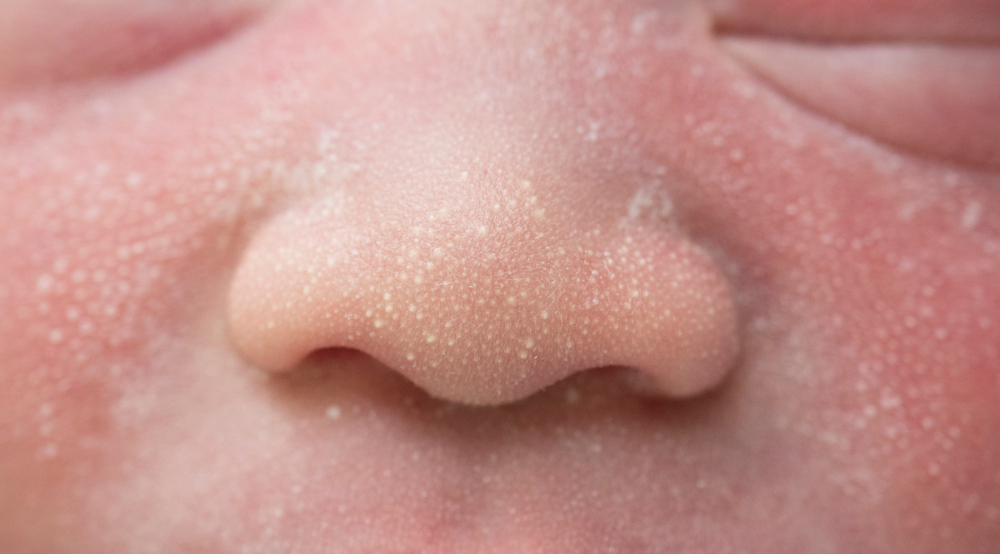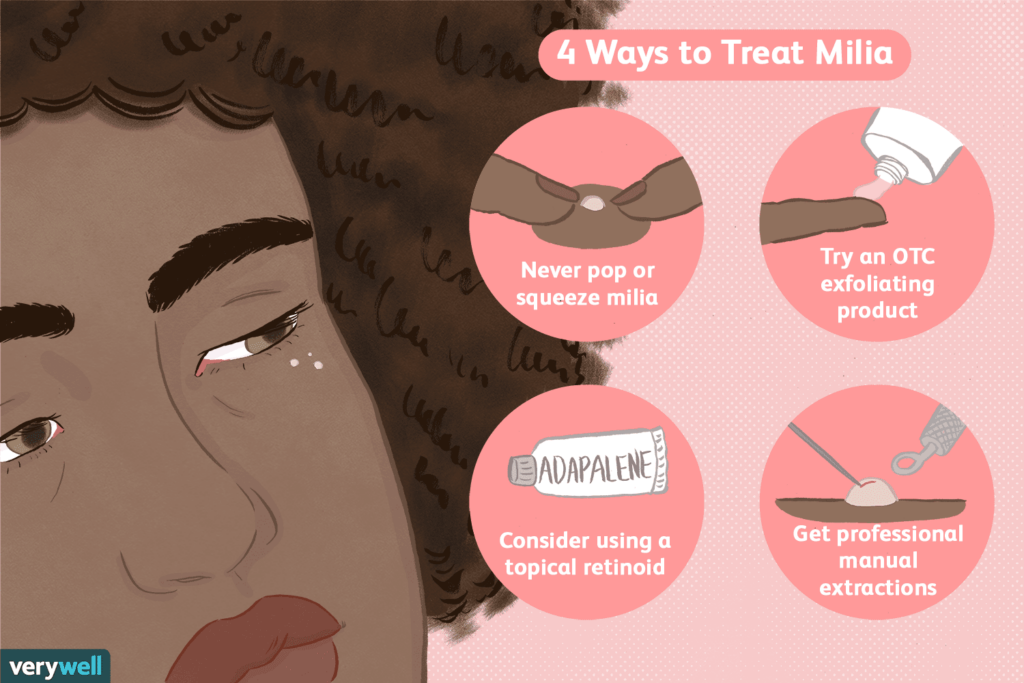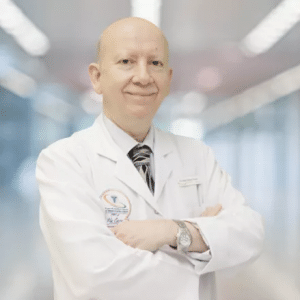Milia
Milia, which is plural for “milium,” refers to a cyst that can be found on the nose and cheeks of the faces of individuals. It comes in the form of a small white or yellow bump that usually appears in clusters. They develop as a result of trapped keratin beneath the skin’s surface. It can be found in people of any age, but it mostly occurs in babies. Read More
Top Doctors For Milia Treatments
Top Hospitals For Milia Treatments
Milia
Table of contents
Milia, which is plural for “milium,” refers to a cyst that can be found on the nose and cheeks of the faces of individuals. It comes in the form of a small white or yellow bump that usually appears in clusters. They develop as a result of trapped keratin beneath the skin’s surface. It can be found in people of any age, but it mostly occurs in babies. This condition is often mistaken for Epstein pearls which are found on the gums or mouth. At other times, baby acne.

Types of Milia
The determining factor for the classification of milium is the age at which it develops in an individual or the cause of the cyst. Thus, they can be classified into primary and secondary categories. As stated earlier, their causes vary.
- Primary Milia – Generally, primary milia occurs on the faces of infants or adults. When the protein keratin becomes trapped beneath the skin surface, it results in the development of primary milia.
- Secondary Milia – Also known as traumatic milia, it results from trauma experienced by the skin. It occurs due to damage to the skin, which may cause clogging on the surface of the skin. These damages include blisters, burns, too much exposure to the sun, injuries, and skin resurfacing procedures such as laser resurfacing.
Other types of milia include the following.
- Neonatal Milia – This type of milia is considered to be primary milia and is known to affect 40 – 50% of newborns. They are found on the face, nose, mouth, upper trunk and scalp. Often mistaken with neonatal acne, which varies in size, neonatal milia are uniform in size.
- Milia en Plaque – This is a rare condition and is sometimes linked to certain skin problems, such as lichen planus. With a clear and defined border, milia en plaque appears as clumps on a flat patch on the skin. It can occur on the cheek, eyelids and behind the ears. It usually affects middle-aged women but can also affect children and adults.
- Multiple eruptive Milia – Multiple eruptive milia is another rare type that occurs as multiple bumps. It can be found on the face, upper arms and upper trunk in the exact location. It can often cause an itchy feeling. It may last for a few weeks to a couple of months.
- Juvenile Milia – This type is caused by rare genetic disorders that affect the skin. These genetic conditions include Gardner’s syndrome, which results in colon cancer, later on, Pachyonychia congenita which results in abnormally shaped or thick nails, etc.
Some drugs or products such as steroid creams may cause milia. Certain ingredients such as liquid paraffin, liquid petroleum, petroleum oil, paraffin oil, paraffinum liquidum, and petrolatum liquid can cause milia in individuals with milia-prone skin. Another substance that may cause milia is called lanolin.
Causes
The cause varies with the age of an individual. In newborn babies, there is no known cause of milia. Mistakenly identified as baby acne in some cases, it does not lead to inflammation of the skin like baby acne. Milia, unlike baby acne, occurs in babies right from birth.
Milium in older children and adults can be caused as a result of:
- aging,
- the inability of the skin to exfoliate naturally, and
- damaged skin.
Some conditions which may cause damage to the skin and serve as a risk of milium include:
- blisters,
- burns,
- long-term sun damage,
- extended use of steroid creams,
- an autoimmune condition,
- lack of proper skin care,
- use of cosmetics without properly washing them off,
- having skin conditions such as eczema,
- skin resurfacing procedures, etc.
Symptoms
Milium is not dangerous but appears as bumps on the face. They may not necessarily be itchy or painful.Their symptoms include:
- white or yellow appearance,
- small-sized bumps,
- may appear red when irritable,
- discomfort (for some people), etc.
Milia Treatment

Milium bumps are harmless and painless, and as a result, they do not cause problems to an individual. They can disappear on their own after a couple of weeks or months. Due to the irritation and discomfort the bumps may cause, individuals sometimes tend to pop them. This, however, is not advised as it may cause some complications, infections or scars. There are several treatment options to help get rid of milia.
Some treatment options include:
- Daily Cleaning – Daily cleaning of the affected area of the skin with milium will help prevent irritation.
- Over-the-Counter Cosmetics – To help get rid of dead skin cells that may clog the skin, some cosmetics can be gotten over the counter in stores. These cosmetics should contain exfoliating agents such as salicylic acid, a topical retinoid or alpha hydroxy acid. These exfoliants have been known to be good in getting rid of dead cells from the body.
Since newborns have rather delicate skins for cosmetics, it is advised that their faces be washed gently with warm water. After bathing the skin with recommended baby soaps, their skin should be cleaned dry.
- Visit a Dermatologist – Sometimes, these cysts do not go away on their own. This may cause some discomfort to some individuals. When over-the-counter treatment does not work, one can always visit a dermatologist. The dermatologist is in the best position to recommend the best form of treatment, such as cryotherapy, minocycline, etc., to remove the cyst. Such treatment may involve surgical procedures such as de-roofing and curettage.
Risk Factors Associated with Milia
Generally, there are few risk factors associated with milia. Sometimes, it can be mistaken for other skin conditions and thus, it is advised that milium be properly diagnosed before any form of treatment is carried out. Proper diagnosis will help in preventing any form of complications.
Prevention of Milia
Babies who have milia usually get it from birth, and thus, it cannot be prevented. But in the case of adults, practicing a proper skincare routine can help prevent milia’s occurrence. Skin care practices that can be followed are discussed below.
- Early Practice – It is essential to teach children the importance of proper skin care from an early age. This will help prevent skin breakouts as they grow older.
- Proper Skin Care Practice – Sometimes, women tend to sleep off without washing off their makeup. This is a bad practice and should be stopped. It is always advised to wash off dirt and sweat that build up on the skin. If not, they will clog the skin pores and cause skin problems. Keeping the skin clean and dry will adi in the natural exfoliation process of the skin.
- Avoid the Use of Thick Cosmetics – The application of creams or oil-based products that are thick may lead to the blocking of the skin pores. This will, in turn, lead to skin conditions such as milia.
- Use of Sunscreens and Moisturizers – Excessive exposure of the skin to the sun will prevent dead cells from falling off. This will eventually lead to the development of milium. To prevent the sun from harming the skin, the use of sunscreen is advised. Applying moisturizer will aid in rehydrating the skin and prevent it from being dry. Sunscreens and moisturizers help keep the skin soft and smooth.
Finally, milia is a type of cyst that poses no threat to an individual. It occurs in people of all ages but is often found in newborns. There are several types, each varying in the cause. It can go on its own without treatment within a few weeks or months. A doctor should be visited for proper medical diagnosis or treatment, especially if the cyst does not disappear after a while.
































































